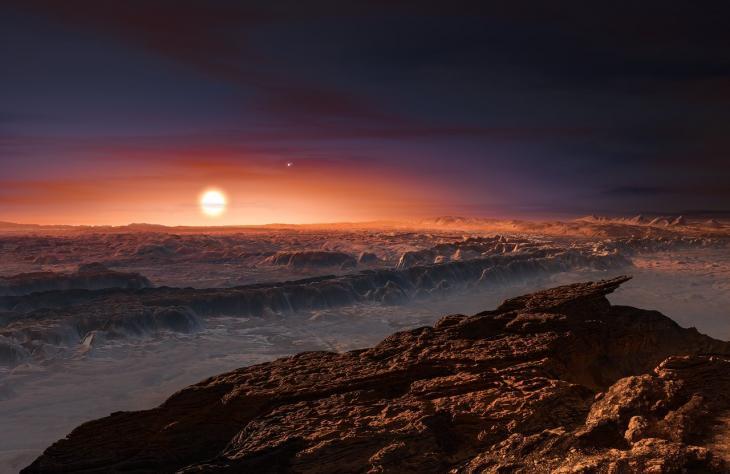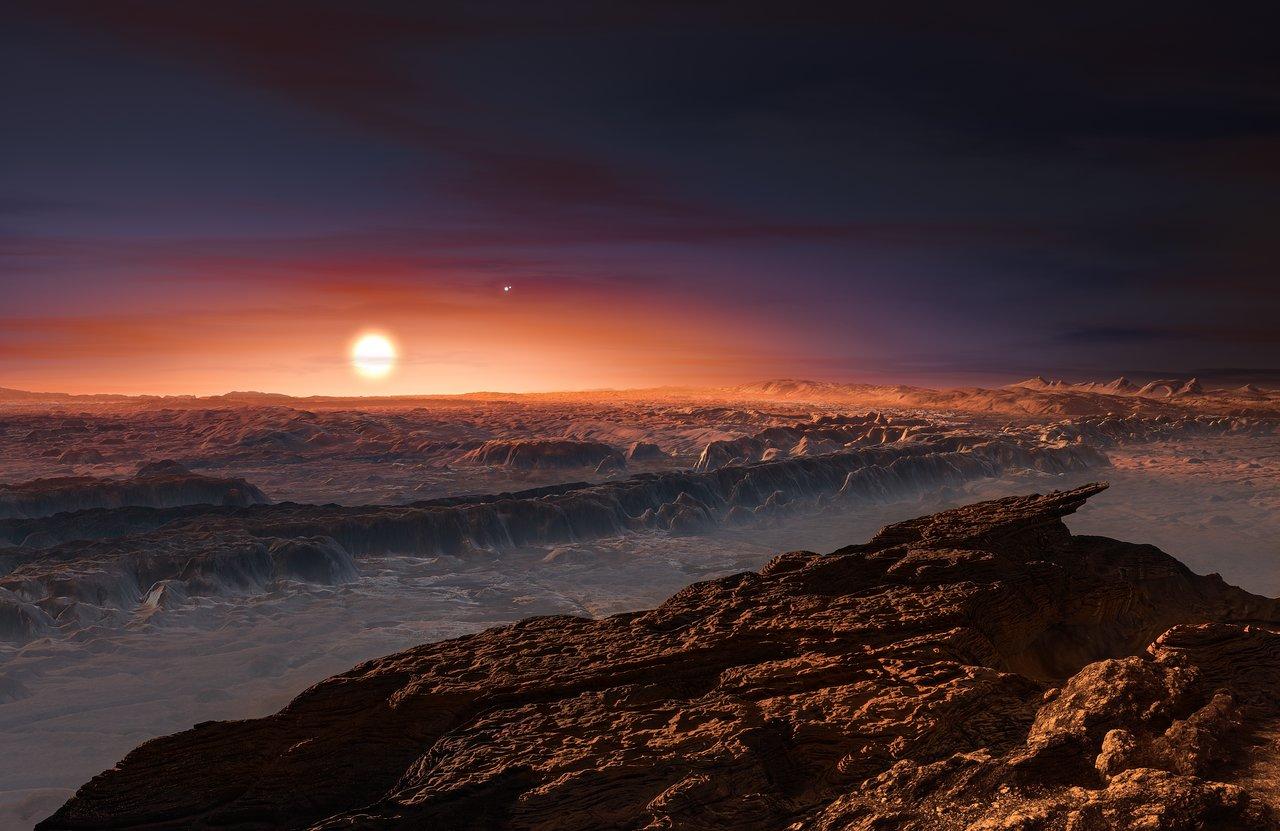 News
NewsSecond home
There's no place like home – or is there? A rocky planet that could orbit in the habitable zone has been discovered around our nearest star, Proxima Centauri.
 News
NewsThere's no place like home – or is there? A rocky planet that could orbit in the habitable zone has been discovered around our nearest star, Proxima Centauri.

Artists impression of the view from Proxima Centauri b
Image Credit: ESO/M Kornmesser
There's no place like home – or is there? A rocky planet that could orbit in the habitable zone has been discovered around our nearest star, Proxima Centauri.
Proxima Centauri is the closest star to our Sun, a red dwarf just over four light years away. Careful measurements of its velocity relative to Earth have revealed periodic wobbles indicating an orbiting planet, observations tracked on the website Pale Red Dot. The data indicate that a planet with a mass at least 1.3 times that of the Earth is orbiting the star every 11.2 days, and that it does so in an orbit that may allow liquid water to exist on the surface.
The planet's mass suggests that it is a rocky body, like Earth, but it is much closer to its parent star, at only 5% of the distance from Earth to the Sun; this would be well within the orbit of Mercury. The new planet may be tidally locked to its star, or it may rotate; it is also likely to be subject to X-ray flares from the star.
There have been suggestions of a planet around Proxima Centauri before, and in 2012 the discovery of an Earth-sized planet was announced around Alpha Centauri B, but this has since been discounted. This discovery appears more robust, using data mined back to 2000.
The discovery of a small planet so close to Earth opens up many posisbilities: if transits of the planet across its parent star can be detected, astronomers may find out if it has an atmosphere. it may then be possible to detect something of the atmospheric composition and it is is indeed habitable. The planet is even close enough to Earth for an exploratory mission to be conceived.
As Guillem Anglada-Escudé, an astronomer at Queen Mary University of London and leader of the discovery team put it in Nature, the journal announcing the results "The search for life starts here."
If you would like to submit an article to A&G Forum then please go here.